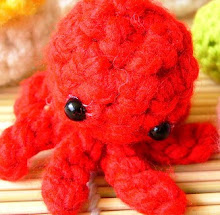Tea comes in various blends, such as green, white, and black teas, as well as yerba mate and oolong tea - all of which are caffeinated. When tea is produced, each blend, however, doesn't come from a different plant. What plant tea comes from varies with location, with teas from China and Japan coming from one tea bush and teas from India and Sri Lanka coming from another. Tea blends, in addition to the antioxidants in the blend, are created from the process between picking and blending the leaves. Generally, combinations of allowing the tea leaves to wilt and if they are oxidized create various blends.
The plant that all caffeinated tea originates from is Camellia sinensis, an evergreen plant that grows in tropical and sub-tropical climates like those in eastern and south Asia, although tea plants are actually grown as north as Seattle and Cornwall, UK. In order to grow, tea plants need fifty inches of rain per year and acidic soil. In addition, tea grown at higher elevators tends to produce higher-quality blends, as the plant is allowed to grow slower. The tea that you see in a bag or in a loose blend, however, is only picked from the top two inches of a bush. The top two inches, referred to as a flush, grows again every seven to ten days. If allowed to keep on growing, the tea bush would eventually become a tree.
The species of Camellia sinensis varies with the location in which it is grown. In China, as well as in Japan and Taiwan, the species of tree is C. sinensis sinensis, a smaller leaf species. Assam tea, the blend grown in India and Sri Lanka, is a larger leaf tea that goes by the species C. sinensis assamica. Generally, teas in this region, including Ceylon blends and Indian black tea, but Darjeeling does not. In addition, a third species can be found in Cambodia, C. sinensis parvifolia, a tea bush with medium-sized leaves.
How are the separate tea blends created? Once the tea leaves are picked, they go through a process called enzymatic oxidation, which is heating the picked leaves to deactivate the enzymes in them. The leaves, before being oxidized, may be wilted or dried. For black tea, the leaves are heated and dried at the same time. White tea, on the other hand, is neither wilted nor oxidized, and an offshoot of white tea, yellow tea, has the same process, but the leaves are allowed to "yellow" or age slightly afterwards. Green tea is similar, as well, only the leaves are wilted. Oolong tea, generally a stronger flavored black tea, has leaves that are wilted, bruised, and partially oxidized.
When you purchase
tea, the blend isn't always pure. For better flavors, tea from both types of plants, as well as different blends, are mixed together for a better-tasting blend.
Article Source: http://EzineArticles.com/?expert=Irene_Test



